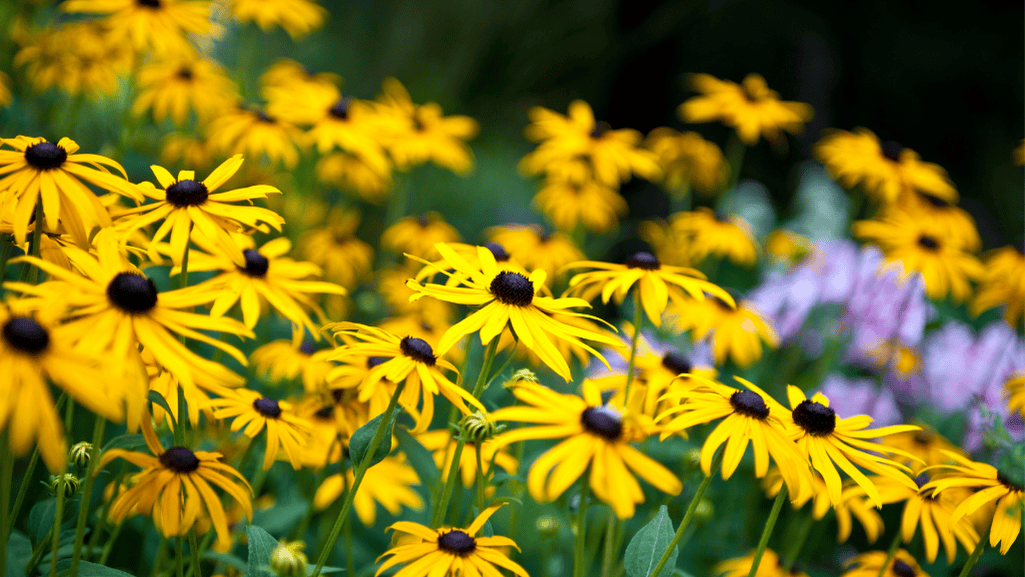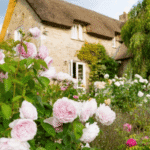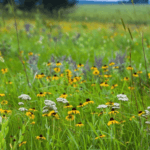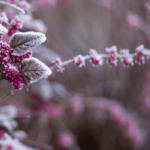
Beautiful flowers gardenia Plants For Your homes

Black eyed susans, known as rudbeckia hirta, brighten gardens with their vibrant yellow flowers. These hardy perennials are native to North America and thrive in zones 3 to 9. Gardeners adore them for their long-lasting blooms, drought resistance, and pollinator appeal.
Black eyed susans bloom from July to the first frosts, adding golden color to the summer scene. Tammy Sons, CEO of TN Nursery, says their peak bloom is in July and August. Some varieties, like ‘Early Bird Gold’, bloom as early as spring.
These native plants bloom well with little care. TN Nursery sells over 3,000 black eyed susan plants weekly, showing their popularity. They grow 1 to 3 feet tall, with flowers 2 to 3 inches wide. This makes them perfect for pollinator gardens or summer bouquets.
Black Eyed Susans, known scientifically as Rudbeckia hirta, are wildflowers that have won the hearts of many. They are famous for their bright yellow petals and dark brown centers, looking like a “black eye.” These flowers are perennials, adding color to gardens and prairies. They are perfect for both new and seasoned gardeners.
Black Eyed Susans are from North America, stretching from the eastern United States to parts of Canada. They love different habitats like prairies, meadows, and open woods. These flowers can grow on various soils and handle both dry and wet conditions, making them versatile for landscaping.
The Rudbeckia genus includes about 25 species, all from North America. Some well-known species are:
Black Eyed Susans stand out with their bright yellow petals and dark brown or black center. They can grow 1 to 3 feet tall, with some reaching up to 9 feet. Their leaves are long and lance-shaped, up to 6 inches long. The flower heads are 2 to 3 inches wide.
| Characteristic | Description |
|---|---|
| Height | 1 to 3 feet (up to 9 feet in some varieties) |
| Leaf Size | Up to 6 inches long |
| Flower Head Diameter | 2 to 3 inches |
| Ray Floret Color | Bright yellow |
| Central Disk Color | Dark brown or black |
Black Eyed Susans are tough and adaptable, making them great for all gardeners. They are deer-resistant and can grow in various sunlight and water conditions. This makes them versatile for different landscaping needs.
Many things affect when Black Eyed Susans bloom. These plants love certain climates, need the right sunlight, and prefer soil that drains well. Knowing these things helps gardeners make the best conditions for these plants to grow and bloom well.
Black Eyed Susans come from North America and grow in USDA Hardiness Zones 3-9. They do best in warm weather over 60 degrees Fahrenheit. In cooler places, they might bloom later than in warmer areas.
It’s best to plant them in summer or early fall. This lets them get established well during these seasons.
Black Eyed Susans need lots of sunlight to bloom well. They should get at least 6 hours of direct sunlight each day. They can take some shade, but they won’t bloom as much.
Planting them where they get lots of sunlight will help them grow strong and bloom longer.
Soil that drains well is key for Black Eyed Susans. These plants like loamy soil that lets water drain fast. This prevents root rot and other diseases.
They can grow in poor soil, but they do better in rich, well-draining soil. Adding compost to the soil can make it better for them.
| Factor | Optimal Conditions |
|---|---|
| Climate | USDA Hardiness Zones 3-9, temperatures above 60°F |
| Sunlight | Full sun exposure (at least 6 hours per day) |
| Soil | Well-draining, loamy soil rich in organic matter |
Black Eyed Susans (Rudbeckia spp.) are popular perennials known for their bright yellow petals and dark centers. They are native to North America and have spread to many parts of the world. Knowing when they bloom is key for gardeners who want to attract pollinators.
In early summer, around June, Black Eyed Susans start to bloom. The exact time can change based on the type of plant and the local weather. Some types, like ‘Early Bird Gold’, may bloom as early as late spring, adding color to gardens early on.
Black Eyed Susans bloom the most in mid to late summer, from July to August. During this time, they produce many bright, daisy-like flowers. These attract bees, butterflies, and hummingbirds. The flowers stand tall on strong stems, making them perfect for large plantings.
| Blooming Period | Duration |
|---|---|
| Early Summer | June |
| Peak Flowering | July to August |
| Extended Bloom Time | September to First Frost |
Black Eyed Susans are known for blooming for a long time. While many perennials stop in late summer, these plants keep blooming into fall. In areas with mild autumns, they can bloom until the first frost, offering nectar to late-season pollinators.
To make them bloom longer, remove dead flowers regularly. This encourages new buds to grow and extends their blooming season. With the right care, Black Eyed Susans can brighten gardens for months, becoming a favorite in summer landscapes.
Gardeners looking to brighten their gardens early can choose from several Black Eyed Susan varieties. These native wildflowers bloom early, bringing yellow and gold to the landscape. They attract pollinators and make gardens look great in spring and early summer.
‘Early Bird Gold’ is a great choice for its early blooms. It grows 12 to 18 inches tall, perfect for borders or containers. ‘Goldsturm’ (Rudbeckia fulgida ‘Goldstrum’) is another favorite for its long-lasting golden-yellow flowers with dark centers.
For taller plants, try ‘Sweet’ Black Eyed Susans (Rudbeckia subtomentosa), reaching 3 to 5 feet. These perennials are great for naturalized gardens or meadows. ‘Gloriosa Daisies’ (Rudbeckia hirta ‘Gloriosa’) grow 12 to 36 inches tall and do well in partial shade. Their giant, bi-color double flowers add a unique touch to gardens.
| Cultivar | Bloom Time | Height | Characteristics |
|---|---|---|---|
| Early Bird Gold | Spring to Fall | 12-18 inches | Compact, long-blooming |
| Goldsturm | Early Summer to Fall | 24-36 inches | Long-lasting, abundant flowers |
| Sweet Black Eyed Susan | Mid-Summer to Fall | 3-5 feet | Tall, ideal for naturalized settings |
| Gloriosa Daisies | Early Summer to Fall | 12-36 inches | Giant, bi-color double flowers |
Some Rudbeckia varieties are perennials, while others, like the Clasping Sunflower (Rudbeckia amplexicaulis), are annuals. This low-growing plant is great for the front of gardens and can be grown from seed each year. By using a mix of early-blooming Black Eyed Susans, gardeners can enjoy these wildflowers for longer in their gardens.
Black-Eyed Susans are loved for their long-lasting flowers that brighten gardens from early summer to the first frost. To make these flowers last longer, gardeners can use simple tips. These tips help with healthy growth and lots of blooms. By adding these to your low-maintenance gardening plan, you can have a garden full of color all season.
Deadheading is a great way to keep Black-Eyed Susans blooming longer. It means cutting off old flowers to make the plant focus on new blooms instead of seeds. To do this, cut the stem just past a leaf, right at the soil level. Doing this often keeps your garden looking neat and extends the bloom time.
Black-Eyed Susans can handle drought but need regular water for lots of flowers. Water them deeply and often, aiming for the base of the stem to avoid leaf wetness. This can cause mildew. They also need well-drained soil to prevent root rot and grow well. A slow-release fertilizer in early spring helps them grow strong and bloom more.
Black-Eyed Susans spread fast and need dividing every 3 to 4 years to stay healthy. The best time to do this is in early spring or fall, when it’s cool and moist. When dividing, dig up the clumps, separate the roots, and replant them in good soil. This keeps the plants strong and lets you add more to your garden for more color.
Using deadheading, proper watering, fertilizing, and dividing can make your Black-Eyed Susans bloom longer. These easy steps will give you a garden full of life and beauty. It will be a place where butterflies and other pollinators can enjoy the beauty of these wildflowers all season.
Black-eyed Susans are more than just pretty with their bright yellow petals and dark centers. They are key to supporting pollinators and keeping ecosystems healthy. As pollinator-friendly native North American species, these flowers draw in many insects and birds. They are great for any pollinator garden.
Black-eyed Susans are great at drawing in bees and butterflies. Their flowers have sterile ray flowers that attract pollinators and brown center flowers with nectar and pollen. This design offers a lot of food for different pollinators, including:
Planting black-eyed Susans in groups makes them more attractive to pollinators. It also helps pollinators find and visit these plants more easily.
Black-eyed Susans are important in North American ecosystems. They give nectar and pollen to pollinators. They also help certain butterfly species by being their host plants. For example, the Silvery Checkerspot butterfly lays its eggs on Rudbeckia leaves. These leaves are the only food for the caterpillars.
These plants also help birds, especially in fall and winter. Birds like goldfinches eat the seeds of black-eyed Susans. This is important when other food is scarce.
| Pollinator | Attraction |
|---|---|
| Native Bees | Nectar and Pollen |
| Honey Bees | Nectar and Pollen |
| Bumblebees | Nectar and Pollen |
| Butterflies (e.g., Silvery Checkerspot) | Nectar and Host Plant |
| Birds (e.g., Goldfinches) | Seeds |
Adding black-eyed Susans to gardens and landscapes helps create places that support many insects and birds. These plants make gardens look beautiful and help native ecosystems stay healthy.
Black Eyed Susans, or Rudbeckia hirta, are versatile perennial wildflowers perfect for many landscaping designs. They grow well in zones 3 to 9 and stand out with their bright yellow petals and black centers. These plants are easy to care for, making them great for gardens, borders, and meadows.
Black Eyed Susans look great with many plants, creating beautiful garden scenes. Here are some ideas for planting them with other flowers:
Planting Black Eyed Susans in large groups makes a big statement. They spread out and create a beautiful, wildflower-like garden over time. Here are some ideas for big plantings:
When adding Black Eyed Susans to your garden, think about their height and spread. Some plants are short, perfect for containers or the front of the border. Others can grow up to 5 feet tall, great for the back of the garden. Below is a table with some popular Black Eyed Susan varieties and their features:
| Variety | Height | Bloom Time | Characteristics |
|---|---|---|---|
| Goldsturm | 2-3 feet | Mid-summer to fall | Large, golden-yellow flowers; compact growth habit |
| Irish Eyes | 3-4 feet | Mid-summer to fall | Bright yellow petals with green centers; tall, sturdy stems |
| Little Goldstar | 14-16 inches | Mid-summer to fall | Compact, bushy growth; abundant, small golden flowers |
| Cherokee Sunset | 2-3 feet | Mid-summer to fall | Double and semi-double flowers in shades of yellow, orange, and mahogany |
Adding Black Eyed Susans to your garden brings color, interest, and helps pollinators. These plants are easy to care for and drought-tolerant. They’re perfect for both new and experienced gardeners wanting a beautiful, sustainable garden.
After the vibrant rudbeckia hirta flowering season ends, it’s key to take good care of your black-eyed Susans. These summer wildflowers with their unique black center petals brighten your garden and help wildlife too.
Wait until spring to cut back black-eyed Susans. The dried seed heads feed birds and other wildlife, and the plant stubble protects the roots in winter. But, these plants spread easily. To stop them from getting too spread out, cut the spent flowers back just below the foliage mound.
Check your black-eyed Susans often for watering needs. Don’t let the soil dry out completely, but don’t overwater either. This can cause disease. Planting them far apart helps with air circulation and prevents fungal problems.
| Characteristic | Description |
|---|---|
| Self-seeding | Black-eyed Susans can self-seed, but newer cultivars are less likely to do so compared to wilder types. |
| Perennial vs. Annual | Rudbeckia fulgida is typically a perennial, while Rudbeckia hirta may behave as a biennial or short-lived perennial. |
| Seed Production | Each Rudbeckia seed head can contain around 100 seeds. |
| Division Timing | Divide and transplant black-eyed Susans in mid to late fall or early to mid-spring for best results. Fall is considered the optimal time. |
Every three to five years, divide mature black-eyed Susans to keep them healthy. This stops them from getting too crowded and helps them bloom well. Fall is the best time for division, letting new plants get roots before winter. Mulching around the plants protects them in the cold months.
Black-eyed Susans are easy to care for and don’t need much fertilizer. But, using a good garden soil mix, like Miracle-Gro® Garden Soil for Flowers, helps them grow strong and bloom more.
By following these tips, your black-eyed Susans will stay healthy, bright, and ready to brighten your garden every year.
Black Eyed Susans are not only beautiful in the garden but also make excellent cut flowers for arrangements and dried flowers for crafts. Their vibrant yellow petals and dark centers add cheer to any bouquet or display.
To enjoy Black Eyed Susans as cut flowers, harvest the blooms just before they open. Each flower has 250 to 500 tiny flowers, making them stand out in arrangements. Large blooms are great for centerpieces, while smaller ones are perfect as accents.
Change the water every day to keep your cut flowers fresh. With proper care, Black Eyed Susans can last 8 to 10 days in a vase.
Black Eyed Susan flowers bloom from mid-September to mid-October. This long blooming period means you can harvest cut flowers for your arrangements throughout the season.
You can also dry Black Eyed Susans for crafts and decorations. Once the seed heads dry and turn brown, it’s time to collect them. Remove the seed heads and put them in a small jar. Shake the jar to loosen the seed heads.
Then, pour the contents into a sieve over white paper. Use your fingers to break up the seed heads, letting the seeds fall through onto the paper.
Black Eyed Susan seeds are gray to black, long, and have fine veins. About 70-80% of what’s left after removing chaff is chaff, and the rest is viable seed. These seeds are great for sowing in disturbed areas or over-seeding a meadow. Each plant can produce 1,000 or more seeds, making propagation cost-effective.
| Seed Viability | Storage Conditions |
|---|---|
| 3-5 years | Cool, dry place |
To store your seeds, fold the paper over and put the seeds in a paper envelope. Close and label the envelope, then keep it in a cool, dry place. Black Eyed Susan seeds can last three to five years if stored right. Saving seeds from your plants can give you hundreds of new plants for little cost, unlike buying them at garden centers.
Harvesting and using Black Eyed Susan flowers for cut arrangements and dried crafts lets you enjoy their beauty indoors and outdoors. Their long blooming season and ability to self-seed make them a great choice for adding golden yellow to your home and garden.
Black Eyed Susans are usually easy to care for and can handle drought. But, they can face pests and diseases that slow their growth and reduce blooms. Spotting these issues early helps keep your garden healthy and beautiful.
Many pests can harm Black Eyed Susans, like Japanese beetles and aphids. Leafhoppers can spread diseases. Lace bugs and thrips can also cause problems. Cucumber beetles are another pest to watch out for.
To fight pests, you can use insecticides or attract helpful insects. Handpicking and keeping your garden clean also helps. It’s important to choose the least harmful pest control methods for your drought-tolerant blooms.
Black Eyed Susans can also get diseases like powdery mildew and root rot. Check your plants often and treat any diseases quickly to stop them from spreading.
Even though Black Eyed Susans are tough, some environmental factors can affect their blooms. Not enough sunlight, poor soil, and extreme temperatures can all hurt their growth.
To help your Black Eyed Susans, make sure they get at least six hours of sunlight a day. Plant them in soil that drains well. Using woodchips as mulch helps keep the soil moist and controls weeds, which lets the plants focus on blooming.
By watching for pests, diseases, and environmental stressors, you can keep your Black Eyed Susans healthy. This ensures they continue to add beautiful, easy-care color to your garden every year.
The Black Eyed Susan (Rudbeckia hirta) is a standout native plant. It brings bright yellow daisy-like flowers to gardens from mid-summer to early fall. It’s a drought-tolerant plant that does well in dry places like Colorado. This makes it easy to care for in gardens.
This plant is great for pollinator gardens because it attracts birds, bees, and butterflies. It grows from 18 inches to 6 feet tall, adding height and interest to any garden. It looks good with other native plants like coneflowers and Russian sage.
To get the best blooms, give it well-drained soil and full sun for 6 to 8 hours a day. Cutting off dead flowers can make it bloom longer, but it’s not necessary.
The Black Eyed Susan also has benefits for workspaces. Studies show it can lower anxiety by 37%, reduce office tension by 44%, and boost well-being and productivity. Adding this plant to your office or garden brings beauty and health benefits. It’s tough, attractive to pollinators, and easy to care for, making it perfect for gardeners and nature lovers.




